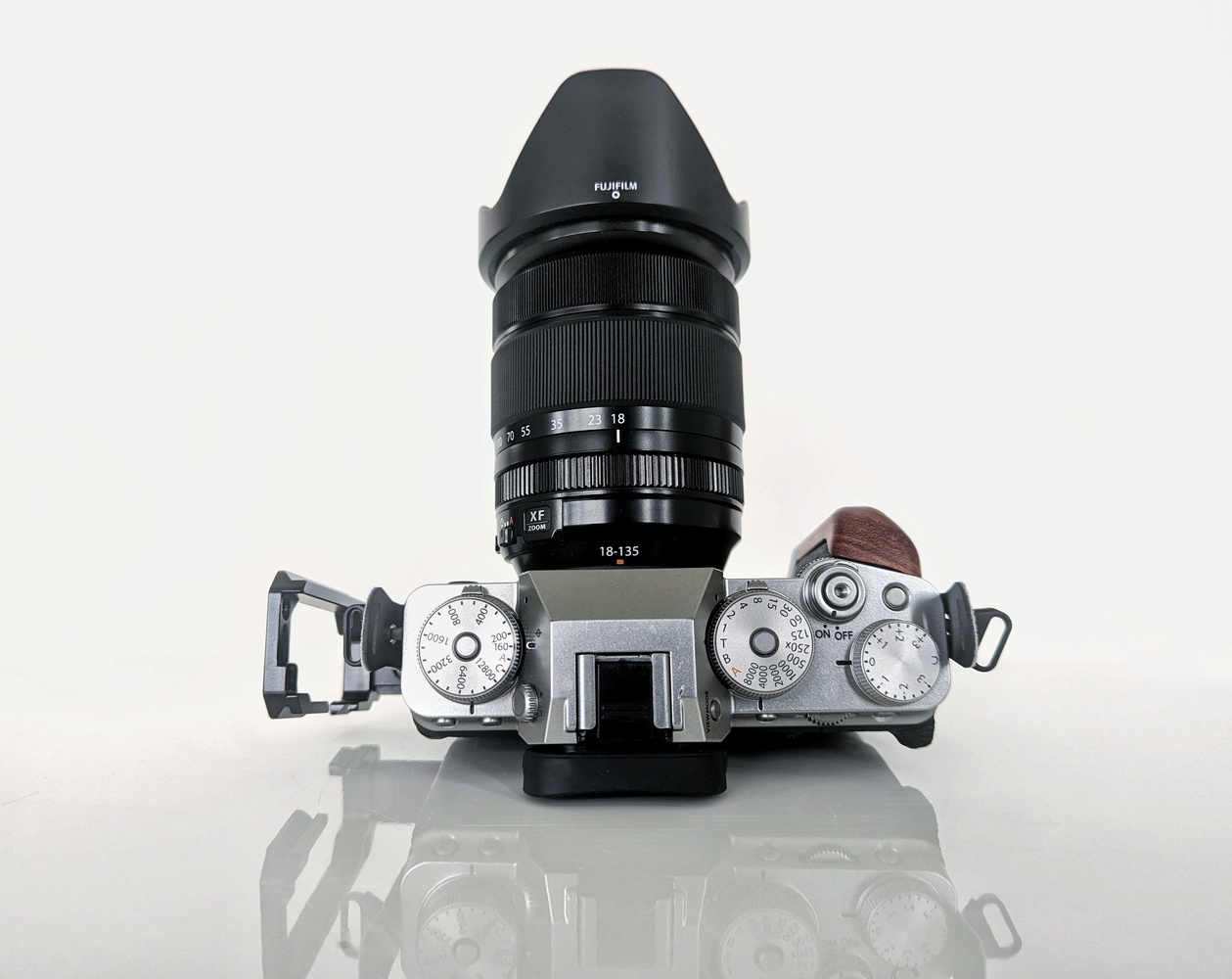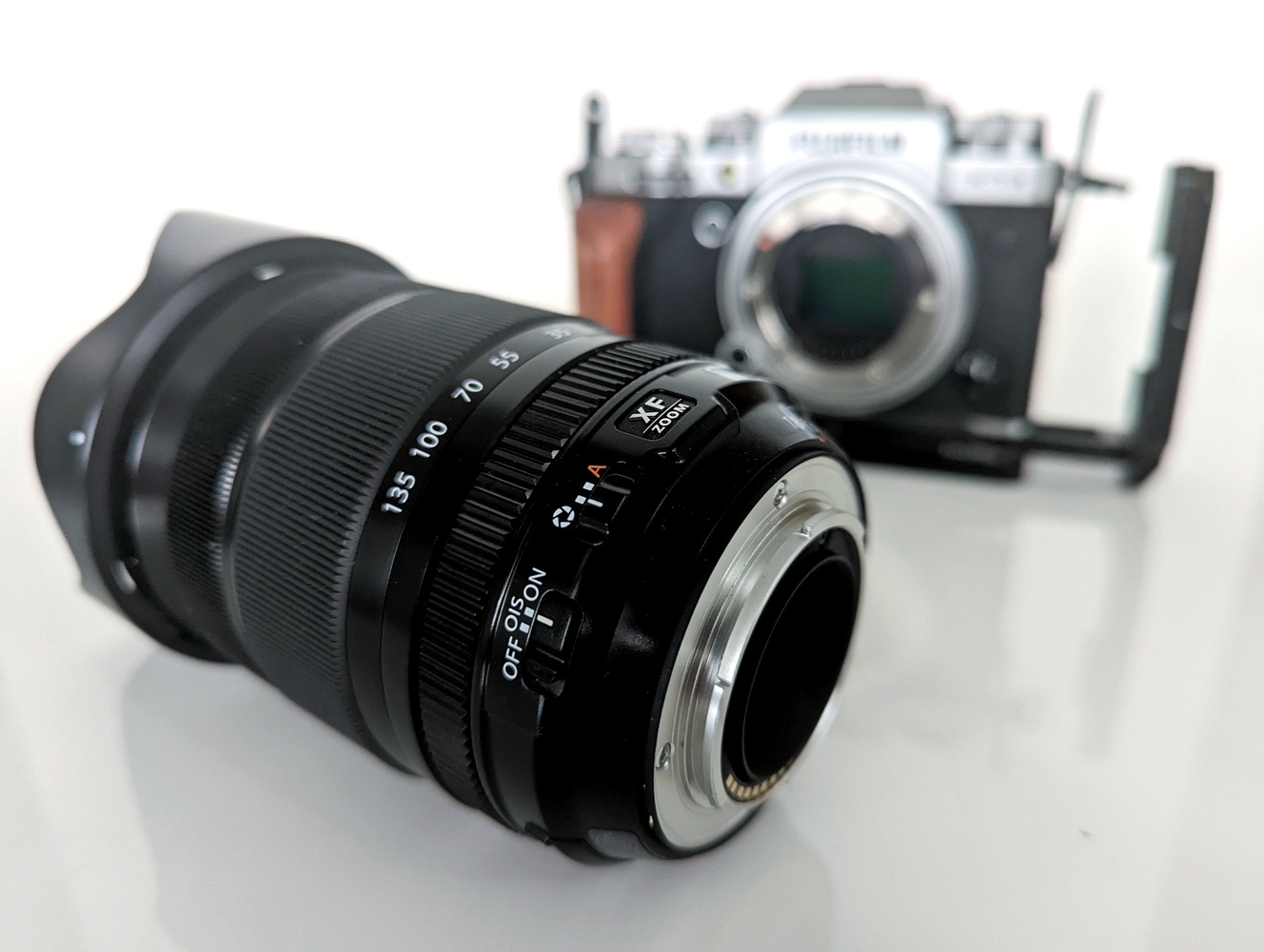Each one of us has a favorite go-to lens, be that a prime, a wide angle, or a telephoto. There's always one lens we will tend to use more than the rest. But what if you could only take one lens with you on travels? What one would it be?
I shoot with both the Nikon Z 7II and a FujiFilm X-T4 and love them both for different aspects of photography. Ask me to choose a single lens for the Nikon Z 7II and I would more than likely be the Nikon Nikkor Z 24-70mm f/4 S. However, ask me what lens I would take for the X-T4, and I wouldn't hesitate to choose the Fujifilm XF 18-135mm f/3.5-5.6 R LM OIS WR lens every time.
Focal Ranges
With that focal range, you would be thinking it's a versatile lens, so what's the point of waxing lyrical about it? Well, with so many choices of lenses out there, how do you know which one to consider for everyday photography? We all have specific needs in whatever photography genre we shoot and know what focal ranges work best for us, so we tend to stick to them. Some people might favor a wider focal length, as it means they can capture the larger landscape or be creative with foreground elements, while others may prefer to stick to lenses that have a narrower or fixed focal length because it makes portraits and other close-up shots easier. The key thing is to determine what's important to you as an individual photographer and then look for lenses with those specific specs.
Even though the 18-135mm has a full frame equivalent reach of 27-206 mm, I had never really considered it and favored the Fujifilm XF 55-200mm f/3.5-4.8 R LM OIS, which is another great lens, but I was missing the middle focal ranges between 10-24mm and the 55-200mm. The 18-135mm came highly recommended, so I took the gamble and sold the 55-200mm, and I haven't regretted it a day since. Surprisingly, I didn't think I would use the lens as much as I do, and for me, it has proven to be a very versatile lens.
Build and Quality
The Fuji XF 18-135mm f/3.5-5.6 OIS WR is a compact lens measuring at 100 mm without the hood and is of a plastic and metal construction, with the barrel and lens hood being plastic. With the lens weighing in at only 490 g, this makes it very lightweight when on your camera considering the focal range achievable. It's weather-sealed and has a metal 67mm filter thread. It can stack a couple of filters without vignetting. 
Containing 16 elements in 12 groups, the front extends forward to 160 mm at full 135mm zoom. The aperture range is f/3.5 at 18mm and f/5.6 at 135mm, plus it can stop down to f/22 if required. Focusing distance is from 45 cm at its closest and performs remarkably well here, allowing for focus-stacking quite easily. 
The aperture ring is located on the barrel and is smooth with just the faintest of clicks when adjusting apertures. The zoom ring has good friction even in wet conditions and is smooth and dampened just enough for a controlled zoom.
How It Performs
The lens has performed great in all the situations I have given it so far. I haven't photographed in very low light, but for this, I would use a wider-aperture lens anyway. With the image stabilization being so good, it has lessened the need for a tripod, which my back was really appreciative of on the longer hikes. Even with handheld panoramas in relatively windy conditions, the image stabilization worked fantastically. On a tripod, again, it performs as expected, and with its compact size, it doesn't require the need for a collar. 

Focusing fast, the lens hasn't let me down yet. I've actually spent a lot of the time with the camera set to aperture priority when the lens is connected, and to be honest, that is so that I can just focus on the fun of photography. I'm mainly a manual shooter for my landscapes, so doing this with this lens has freed me up quite considerably. There is no manual focus override with this lens, so if you want that, you will have to switch the camera to manual.
There's minimal image distortion on the wider focal lengths and none that I noticed above 55mm. 
What I Like
- The lens is lightweight.
- The image stabilization is fantastic even at 135mm.
- Produces sharp images.
- A nice focal range for everyday captures.
- A great all-around lens.

What I Don't Like
Actually, with this lens, there is nothing that I don't like. I would love to have a wider aperture, but that's not going to happen for that price.
Conclusion
Although this is one of the earliest lenses that Fujifilm produced for its X mount range, circa 2014, it's still a great all-around lens that keeps up with today's selections. Personally, I've got the lens attached to the X-T4 all the time unless I'm looking for a wide angle shot, and it hasn't let me down once. I, on the other hand, have let the lens down on a few occasions. It's well worth the price.
It is a great versatile lens that can do more than you think, so don't be put off by its initial release date, as it does provide great sharp results. The price has also remained the same since launch, give or take a few dollars, so that is perhaps a reflection of the quality of images it produces. The image stabilization is fantastic, and while I've been able to capture a few shots at 1/15 sec I could perhaps push it a little further. If you are a Fuji shooter and are looking for a great all-around lens, I wouldn't hesitate in recommending this one for your kit bag.
Although this article relates to a Fuji lens, I'd love to hear in the comments what lens is your all-around lens, no matter the manufacturer.




















Haven't used the 18-135 but seems a well loved lens among Fuji shooters for walk-around stills. I've had issues in the past with superzooms like Tamrons 16-300 for aps-c DSLRs, so I would hope more constrained ~28-200 equivalents would be more performant from an IQ perspective. Personally I prefer primes like the 23mm f2 at wider angles, despite the constraints of a single focal length. At the longer end I'm happy to carry the heavier 50-140mm f2.8.
It’s vastly underrated isn’t it, I never see anyone talking about it yet it’s got OIS and weather sealing.
It's hard to find fault with it. It's well positioned as a daylight do-it-all travel lens.
.
Gary McIntyre asked,
"I'd love to hear in the comments what lens is your all-around lens, no matter the manufacturer."
The lens that works best as an all-around for me is the Sigma 60-600mm f6.3 zoom.
If I could only take one lens with me, that is the one I would choose. It is the only lens I can "get by with" in the absence of other lenses. Of course I would need to take a couple of extension tubes with me so that I could do some close-up, "almost macro" work.
And of course I would also want to have a full frame body and an APS-C body with me, to give some additional versatility in framing the shots, yet maintain pixel density for further away subjects.
.
Where is the lighthouse Gary? It looks very similar in style to the one on the peninsular below Port Logan in Galloway. I just checked my own shot of that one and the tower is almost identical.
I guess the 16-55 is my all round lens, but this makes me slightly envious:)
It's the Turnberry Lighthouse Stuart.
Thanks Gary, just up the coast from Dumfries then if my geography isnt rubbish?
If you are reviewing an old xf lens now I think it is mandatory to comment please on how well it resolves the new 42mp sensor on the xh2
No, it's a failure in terms of quality and price. That's why Fuji had made the new 18-120 F/4.
Thats not even remotely accurate, the 18-120 is a video specific Power Zoom lens and nothing at all to do with this 18-135 lens.
Agreed, the 18-135 is much more attractive from a stills perspective - OIS, better reproduction ratio, more compact. It's a bit pricey new, but it's so old that the occasional used market bargain shows up from time to time.
I agree on price. Should be $599 not $899. I'd suggest buying it on the used market. Some great deals out there if one is patient.
Thanks for sharing Gary M. I've made my rounds of Fujifilm's short zoom from 16-50mm, 18-135mm and 18-55mm lenses, and finally back to 18-135mm again. It's amazing how the OIS works at slow shutter speed without/ minimal lens shake. Overall it is hard to beat and it's my current most used lens. My other lens is the 35mm f2.
I must've had a dud copy of that lens - it's one of only 2 X Series lenses I ever sold. Great to hear that you enjoy it though. My usual travel go to lenses are the 18-55 and the 50-140.
Sold mine too. Wasn’t a huge fan of the images it produced. The 16-55 OTOH is a dream lens, much shorter and way heavier but no contest with image quality and character. Paired with IBIS it’s spectacular.
My copy is reasonable, but not spectacular. The centre is excellent but the corners are pushed, even stopped down. I find that it can't keep up with my XH2. The heavier, larger, less convenient 16-55 and 50-140 combination are so much better I almost always put up with them. The 18-135 is reserved for family shots and things where the corners aren't a big deal.
The only superzoom I've seen that lives up to the hype is the rather fabulous Olympus 12-100 f4 Pro.
Oh wow - that's so helpful to know because corner sharpness and brightness are extremely important to the way I shoot, with the subject often pushed to the extreme edges of the frame. I appreciate you sharing your experiences with the lens.
EDIT: I am interested in knowing what the author, Gary McIntyre, has experienced in regards to the corner sharpness and brightness of this lens. I mean, if the corners were just as important to you as the center, would this be the lens you would choose for shoots that really matter?
I had that lens but sold it as for me it seemed to be a jack of all trades which I could only describe by what it was not...
It had an uninspiring range, was not light enough, was not bright enough and the image quality seemed at best average.